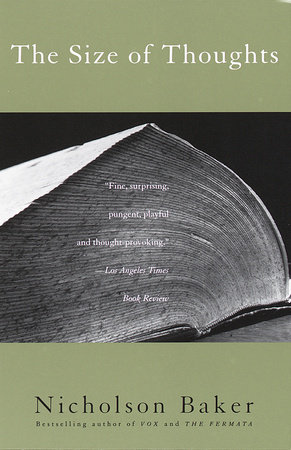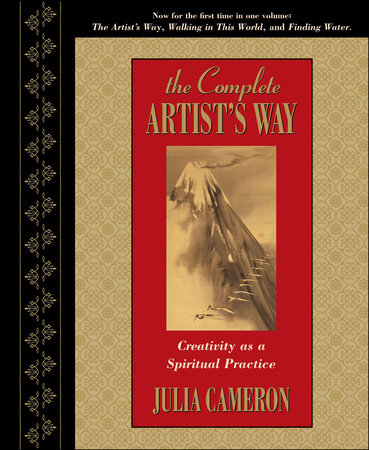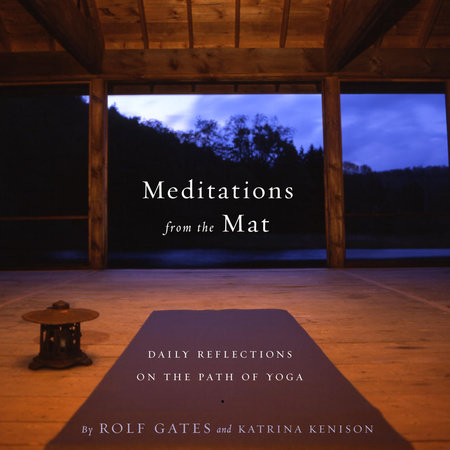Author Q&A
A Conversation with Rolf Gates
Q: This has to be the first yoga or meditation book that quotes John Cougar Mellencamp, Almost Famous, Odysseus, a US Navy SEAL and Lao-Tzu. What inspired the wide range of quotes and references for the book?
A: I’ve always loved quotes. They offer a way for us to gain wisdom and strength from one another. A politician from 100 B.C. may give you insight into your love life, a 17th-century sea captain’s words may give you the courage to ask for a raise. Good quotes are timeless. It’s as if someone just ahead of you on the path of life is turning back to give you a helping hand as you come along behind. As we repeat these quotes, and pass them on, we in turn are helping those who are following in our footsteps.
In Meditations from the Mat, the quotes also remind us that yoga is not an alien philosophy; rather, yoga helps us to remember what we already know. The quotes show that we are all practicing yoga all of the time. Yoga is the deep resonance of a great lyric; it is the essence of a grandmother’s advice; it is in the galvanizing ethos of Ghandi or Martin Luther King Jr.; it is our mind reflecting God’s mind over and over again. And we get glimpses of this in the quotes.
Q: How did you match up each piece to its day? How did you go about organizing the text and quotes?
A: The text itself flows along the lines of the yoga Sutras, the ancient Hindu text that lays out the eight-limbed path of yoga. Believe it or not, the yoga Sutras are as relevant to our lives today, in 21st century America as they were thousands of years ago. Quite simply, the Sutras spell out what’s wrong, why we struggle so, what can be done about it, and what is possible in our lives. In Meditations from the Mat I take all this information, consider it from a contemporary perspective, and break it down into short, accessible daily readings.
So, I did not have to come up with a basic outline for the book; that was done 2,500 years ago. But in the process of examining how I’ve lived and worked with the Sutras myself, I also share my own stories of struggle and transformation. I may write about the path to enlightenment one day, and then, the next day, report from the trenches—recount an anecdote from my life, quote a student, share a discovery I’ve made, offer a tip from yoga class. In the end, I provide the reader with a balanced, realistic sense of what yoga is, and how a daily practice can truly change your life. It has certainly changed mine.
Q: The progression of the book through each day is subtle and powerful, like the practice of yoga itself. How did you come up with the format, did it seem a natural progression?
A: When I think back to how the book came together, the word I have to use is “grace.” I began with a vision of a book that would help American yoga students understand basic yoga theory. Most of us don’t have the time to invest in serious study, but we can all read one page a day. I knew that a book of daily reflections could be enormously helpful to anyone, whether they were a brand new student or had been practicing regularly for years.
From that intention, the essays magically began to flow. Of course, having 365 of them to write, I had plenty of time to cover a lot of ground—and that really helped. But each essay is a little morsel; they are short and to the point. You take one bite a day, digest it fully, and then take another little bite the next day.
In class I emphasize one theme for the day—the breath, perhaps, or surrender—and by keeping it simple, by working with only one point over the course of an hour and a half class, we’re really able to explore that one concept fully. We experience it physically, emotionally, spiritually. The time I give to each concept in this book allows for the same level of integration, the same level of connection to the material. I can examine every idea from a variety of angles—tell a story, make a joke, see what another yoga teacher might have to say on the subject, come full circle, and, in the process, shine a light on something that you may never have even thought about before. Bit by bit, day by day, the reader’s level of awareness and understanding grows and deepens.
Q: Who would you most like to read and be moved by this book?
A: I wrote this book for anyone who can benefit from it, whether or not they have ever set foot on a yoga mat. You really never know who needs to hear what you have to say. As a teacher, I get e-mails and letters and gifts from all sorts of people, thanking me. People often approach me after class to share their stories. They may say they have been taking my class for three months or three years, but in one way or another it has changed their lives. That is humbling to me. I am constantly amazed at the resilience of the men and women I meet each day—they may be going through a divorce or getting married, feeling old or feeling young again, dealing with illness or just getting well. You never know. All I can do is to come from the right place, give from the right place, and let go of the results.
Q: Do you see any danger in the Westernization of yoga? Do you think that people who practice yoga only for fitness are still practicing yoga?
A: I categorically do not fear the “Westernization of yoga.” I am also convinced that no one is “just working out.” Anyone who has had any success in a physical discipline—from running to Martial arts to volleyball—will, upon reflection, concede that their success began with their attitude. Yoga is a systematic attitude adjustment. It teaches us personal responsibility. You cannot accept a challenge like yoga, stay with it, make a modicum of progress, and not work on your attitude in the process. If you are practicing yoga, for whatever reason, you are also taking a greater degree of responsibility for yourself. And this is very healthy. Yoga also opens the door to a vast array of positive, life-enhancing practices—from eating healthfully to meditation to open-mindedness—that many people would not have had access to any other way. So maybe you start with a few yoga classes at the gym—and then, before you know it, you’ve added years of well-being to your life and you’ve given yourself the means to enjoy those years. This is good stuff! And no matter where you are on that journey, Meditations from the Mat will meet you there.
Q: You talk about your own journey with yoga, a journey that took you away from selfish thinking. Where do you think yoga can take your students and readers after they have practiced for ten years time?
A: There is no telling what the outside will look like—what kinds of changes may occur physically, or in terms of relationships, career, or life decisions, although profound transformation can happen in all these areas as we continue to practice yoga. But there are also enormous, invisible changes on the inside—the way we relate to ourselves, to our surroundings, and to others, not to mention the way we interpret the events of our lives. In all of these areas we experience a softening which is actually a kind of strength. Yoga practice encourages us to become supple in the most profound sense of the word. The rigidity that passes for strength in our culture is short-lived and unwise. Lao-Tzu said that the softest thing overcomes the hardest. Water erodes rock. This is the sort of supple strength that will increase over time—the ability to sit with extreme sorrow and joy, loss and gain, the passage of time, aging. We’re really talking about the ability to be in the midst of life as an adult, abiding calmly, seeing clearly, and behaving compassionately. Yoga does not prevent life from happening; rather, it allows us to participate in our own lives fully, with the dignity, effectiveness, joy, and compassion that is our birthright.
Q: How does it feel for you when you feel you have really reached a student, allowing yoga to open their hearts and minds?
A: We teach what we need to learn. People are routinely shocked to find that their yoga teacher is in fact a normal, flawed human being. We are all in the same boat, just human beings trying to sort out this thing called life. I actually believe that therapists and yoga teachers are people who simply need a bit more coaching than most, more assurance than most. To truly understand the healer, one must first grasp the healer’s need to be healed. My experience of a student’s progress is a powerful affirmation that my own progress is possible as well. As I look out at the world and see others getting better, making progress, I am reassured that I, too, am making progress, that there is hope for me as well. My commitment to my students’ growth is my commitment to my own growth. We are one.
Q: Does writing come easily to you? How would you describe the differences between writing MEDITATIONS FROM THE MAT and teaching and practicing yoga?
A: Teaching does come naturally to me. Both of my parents are teachers. and I’ve always known that my own life would be just fine if I would simply allow myself to be a teacher. Unfortunately, for years I thought that in order to really teach I would have to work in a school system, and that felt suffocating to me. So I danced around the edges of teaching, teaching as an Army officer, teaching as an addictions counselor, teaching in my friendships, teaching to anyone who would sit still long enough for me to make a point. Eventually, of course, I ended up teaching yoga and finally allowed myself to become a teacher in the true sense of the word, bringing out the best in my students, recognizing and honoring what is already there in each one of them. Now my life is working out.
Writing feels like teaching to me. When I’m teaching, I am taking a concept and fleshing it out, turning it over, exploring its relevance to me and my students. I’m not just reciting the answers, I’m asking the questions—what is this? And how can we apply it to our lives? For me, teaching is a means of sharing experience; together, we take what life brings to us and we learn how it fits into God’s plan for us. This is what Meditations from the Mat is all about, and it is the essence of all of my teaching. Writing, teaching, learning—they are all one and the same to me.
Q: What is still the hardest aspect of yoga practice for you?
A: Not making it about a specific result. It’s so easy to think, “I am going to practice yoga today to get in shape, to get in the right mindset, to get more comfortable in my body, to better experience this moment, to let go, to hold on, to be happy, to feel my sadness, to come together, to be alone.” But I work at letting all of that go. I am not really on my mat or in my life until I am there without an agenda.
























